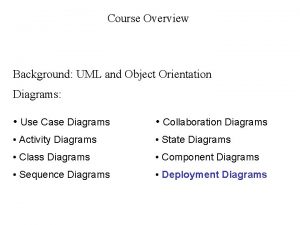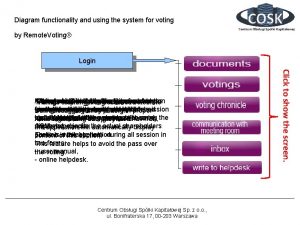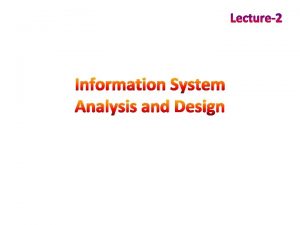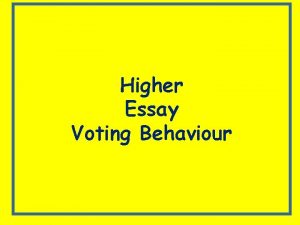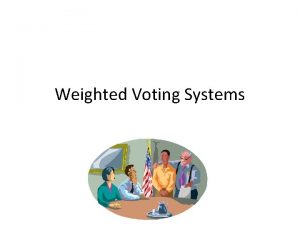Voting System Properties Most voting systems assume no


![2 Such Mixnets Assuming re-encryption: Randomized Partial Checking [JJR 02] Almost Entirely Correct Mixing 2 Such Mixnets Assuming re-encryption: Randomized Partial Checking [JJR 02] Almost Entirely Correct Mixing](https://slidetodoc.com/presentation_image_h/30253f164d83c8901361bfa95f7a42ec/image-3.jpg)






- Slides: 9

Voting System Properties • Most voting systems assume no collusion between more than one party for keys • Most voting systems require a consistency check by each voter for a small piece of the protocol • If 5 -20% of voters check, the correctness of the entire protocol is determined by this weakest link

Choosing a Mixnet • If we can trade a mixnet that requires only one honest* mix for a mixnet that is faster but requires more than one honest mix: good trade for voting • If we can trade cryptographic soundness (1 -ε) for statistical soundness (99%) and speed: good trade for voting * keep permutation private from other mixes
![2 Such Mixnets Assuming reencryption Randomized Partial Checking JJR 02 Almost Entirely Correct Mixing 2 Such Mixnets Assuming re-encryption: Randomized Partial Checking [JJR 02] Almost Entirely Correct Mixing](https://slidetodoc.com/presentation_image_h/30253f164d83c8901361bfa95f7a42ec/image-3.jpg)
2 Such Mixnets Assuming re-encryption: Randomized Partial Checking [JJR 02] Almost Entirely Correct Mixing [BG 02] Open problem 1: others? Open problem 2: throw combinatorics at BG 02

C 1=E(m 1) C 2=E(m 2) C 3=E(m 3) C 4=E(m 4) C 5=E(m 5) C 6=E(m 6) Mix Cπ1 Cπ2 Cπ3 Cπ4 Cπ5 Cπ6

C 1=E(m 1) C 2=E(m 2) C 3=E(m 3) C 4=E(m 4) C 5=E(m 5) C 6=E(m 6) Σ Mix Cπ1 Cπ2 Cπ3 Cπ4 Cπ5 Cπ6 Σ

Necessary but not sufficient C 1=E(m 1) C 2=E(m 2) C 3=E(m 3) C 4=E(m 4) C 5=E(m 5) C 6=E(m 6) Σ Mix Cπ1 (Cπ2)*a Cπ3 Cπ4 (Cπ5)*a-1 Cπ6 Σ

H T T T H T C 1=E(m 1) C 2=E(m 2) C 3=E(m 3) C 4=E(m 4) C 5=E(m 5) C 6=E(m 6) Mix Cπ1 (Cπ2)*a Cπ3 Cπ4 (Cπ5)*a-1 Cπ6 Σ ≠ Σ

Properties Testing product of subsets is probabilistic: boost soundness by repeating Testing product of subsets reduces anonymity: repeating makes worst Adding additional honest mixes increases anonymity Optimize number of tests per mix and number of honest mixes to balance anonymity and soundness

Open Problem 2 Analysis in paper is tricky Complexity seems to result from using random coins Idea: throw a combinatorial design at the problem Choose random instance from a family of { ? } so that guarantees can be made by anonymity sets within mixes and with adjacent honest mixes
 Deployment diagram notations
Deployment diagram notations Deployment diagram for online voting system
Deployment diagram for online voting system Sms based voting system
Sms based voting system Online voting system project proposal
Online voting system project proposal Activity diagram for online voting system
Activity diagram for online voting system Pros and cons of additional member system
Pros and cons of additional member system What are the main features of analyzed system?
What are the main features of analyzed system? Imf functions
Imf functions Voting behaviour essay
Voting behaviour essay Voting rights
Voting rights
